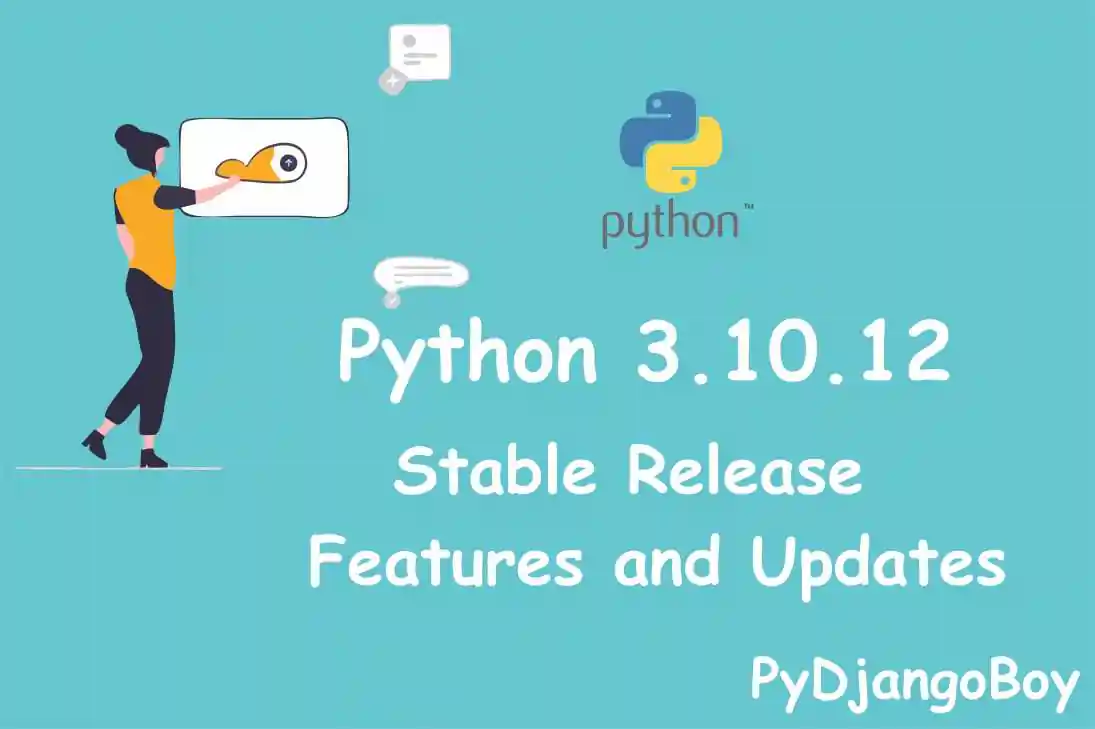How to Use Factory Boy for Efficient Django Testing
Learn how to use Factory Boy, a powerful testing library for Django, to generate efficient and dynamic test data for your Django applications

How to Use Factory Boy for Efficient Django Testing
Learn how to use Factory Boy, a powerful testing library for Django, to generate efficient and dynamic test data for your Django applications
Factory Boy is a Python library for creating and managing test data in a simple and efficient way. It is particularly useful in the context of testing Django applications. To use Factory Boy, you define a set of "factories" that generate fake data for your tests. You can then use these factories to create test objects quickly and easily.
To get started with Factory Boy, you'll need to install the library using pip. You can then define your factories in a Python module, specifying the fields you want to generate for each object. Once you've defined your factories, you can use them in your tests to create and manage test data. Factory Boy also provides a range of advanced features, such as the ability to create related objects, customize fields, and use pre-existing objects as a starting point.
o use Factory Boy for efficient Django testing, it is recommended that you have the following prerequisites:
- Basic understanding of Python programming language
- Familiarity with Django web framework
- Knowledge of testing concepts and tools
- Familiarity with pip, the Python package manager
Additionally, it is recommended that you have a basic understanding of object-oriented programming and relational databases.
If you are new to Python, Django, or testing, there are many online resources available to help you get started. Some recommended resources include the official Django documentation, online tutorials and courses, and developer communities and forums.
You can download Factory Boy using pip, the Python package manager, by running the following command in your terminal or command prompt:
pip install factory-boy
Here are some links to useful resources for learning more about Factory Boy:
- Factory Boy documentation
- Factory Boy GitHub repository
- Django documentation
- Python Testing Tools Taxonomy
These resources provide comprehensive information on using Factory Boy with Django, as well as testing best practices and advanced features. Additionally, there are many online tutorials, articles, and forums available where you can find examples and guidance on using Factory Boy effectively.
Here's a step-by-step tutorial on how to use Factory Boy with Django, including examples and sample output:
Step 1: Install Factory Boy
First, you need to install Factory Boy. You can do this using pip:
pip install factory-boy
Step 2: Create a Django Project
If you haven't already, create a new Django project:
django-admin startproject myproject
Step 3: Create a Django App
Create a new Django app within your project:
python manage.py startapp myapp
Step 4: Define a Django Model
In this example, we'll use a simple Django model for a blog post:
from django.db import models
class Post(models.Model):
title = models.CharField(max_length=100)
content = models.TextField()
created_at = models.DateTimeField(auto_now_add=True)
Step 5: Define a Factory
Next, we'll define a Factory for the Post model using Factory Boy. Create a new file called factories.py within your Django app, and add the following code:
import factory
from .models import Post
class PostFactory(factory.django.DjangoModelFactory):
class Meta:
model = Post
title = factory.Faker('sentence')
content = factory.Faker('paragraph')
This Factory will generate fake Post objects with random title and content fields, using the faker library to generate realistic text.
Step 6: Use the Factory in Tests
Now we'll use the Factory in a Django test. Create a new file called tests.py within your Django app, and add the following code:
from django.test import TestCase
from .factories import PostFactory
class PostTestCase(TestCase):
def test_post_creation(self):
post = PostFactory()
self.assertTrue(isinstance(post, Post))
This test will create a new Post object using the PostFactory Factory, and verify that it is an instance of the Post model.
Step 7: Run the Test
Finally, run the test using the Django test runner:
python manage.py test myappIf everything is set up correctly, you should see output similar to the following:
Creating test database for alias 'default'...
System check identified no issues (0 silenced).
.
----------------------------------------------------------------------
Ran 1 test in 0.001s
OK
Destroying test database for alias 'default'...
Congratulations! You have successfully used Factory Boy with Django to generate fake data for testing.
Note: This is just a basic example to get started with Factory Boy. There are many more features and options available, such as defining relationships between models, generating data with specific formats, and more. Be sure to check out the official Factory Boy documentation for more information.
Advanced Usage
Factory Boy has many more features and options available for generating complex test data. Here are a few examples:
- Creating related objects:
class UserFactory(factory.django.DjangoModelFactory):
class Meta:
model = User
first_name = factory.Faker('first_name')
last_name = factory.Faker('last_name')
email = factory.Faker('email')
class PostFactory(factory.django.DjangoModelFactory):
class Meta:
model = Post
title = factory.Faker('sentence')
content = factory.Faker('paragraph')
author = factory.SubFactory(UserFactory)
In this example, the PostFactory creates a related User object using the SubFactory method. This will automatically create a new User object and associate it with the Post being created.
- Customizing fields:
class PostFactory(factory.django.DjangoModelFactory):
class Meta:
model = Post
title = factory.Sequence(lambda n: 'Post {}'.format(n))
content = factory.LazyAttribute(lambda obj: '{} content'.format(obj.title))
In this example, the title field is generated using a Sequence that increments with each new PostFactory creation, and the content field is generated using a LazyAttribute that depends on the title field.
- Using
django.contrib.auth:
from django.contrib.auth.models import User
class UserFactory(factory.django.DjangoModelFactory):
class Meta:
model = User
username = factory.Faker('user_name')
email = factory.Faker('email')
first_name = factory.Faker('first_name')
last_name = factory.Faker('last_name')
password = factory.PostGenerationMethodCall('set_password', 'password')
In this example, the UserFactory creates a new user with a random username, email, first name, last name, and password. The PostGenerationMethodCall method is used to call the set_password method on the new user object with the value 'password'.
- Using
factory.Iterator:
class PostFactory(factory.django.DjangoModelFactory):
class Meta:
model = Post
title = factory.Iterator(['Post 1', 'Post 2', 'Post 3'])
content = factory.Faker('paragraph')
In this example, the title field is set using an Iterator that cycles through the values 'Post 1', 'Post 2', and 'Post 3'. This can be useful for testing different scenarios or edge cases.
Example of using Factory Boy with a Python
Factory Boy is a Python library for creating test data that can be used in unit tests, functional tests, and other types of testing. It provides a convenient way to generate test data that is both customizable and reusable.
Prerequisites:
- Python 3.x installed on your system
- An understanding of Python and object-oriented programming
Factory Boy documentation can be found on its official website:
In this example, we will create a simple Python project that includes a database model and a Factory Boy factory for creating instances of that model.
Here are the steps:
- Create a new Python project directory and navigate into it:
mkdir myproject
cd myproject
- Install Factory Boy:
pip install factory_boy
- Create a new Python file called
models.pyand define a simple database model:
from sqlalchemy import Column, Integer, String
from sqlalchemy.ext.declarative import declarative_base
Base = declarative_base()
class User(Base):
__tablename__ = 'users'
id = Column(Integer, primary_key=True)
name = Column(String)
email = Column(String)
This model represents a simple user with an ID, name, and email address.
- Create a new Python file called
factories.pyand define a Factory Boy factory for theUsermodel:
import factory
from myproject.models import User
class UserFactory(factory.Factory):
class Meta:
model = User
name = factory.Faker('name')
email = factory.Faker('email')
This factory uses Factory Boy's built-in Faker provider to generate random names and email addresses for each user.
- Create a new Python file called
tests.pyand write a unit test that uses theUserFactoryto create a user:
from myproject.factories import UserFactory
def test_user_creation():
user = UserFactory.create()
assert user.name is not None
assert user.email is not None
This test creates a new user using the UserFactory and then checks that the user's name and email address are not None.
- Run the test:
python -m unittest tests.py
This should output something like the following:
.
----------------------------------------------------------------------
Ran 1 test in 0.001s
OK
This indicates that the test passed successfully.
Conclusion
Factory Boy is a powerful library for generating test data in Django. By using Factories to generate fake data, you can quickly and easily create complex test cases with realistic data. With the advanced options available in Factory Boy, you can customize your test data to suit your needs and create a comprehensive suite of tests to ensure the quality of your code.

DigitalOcean Sign Up : If you don't have a DigitalOcean account yet, you can sign up using the link below and receive $200 credit for 60 days to get started: Start your free trial with a $200 credit for 60 days link below: Get $200 free credit on DigitalOcean ( Note: This is a referral link, meaning both you and I will get credit.)
Latest From PyDjangoBoy
👩💻🔍 Explore Python, Django, Django-Rest, PySpark, web 🌐 & big data 📊. Enjoy coding! 🚀📚









